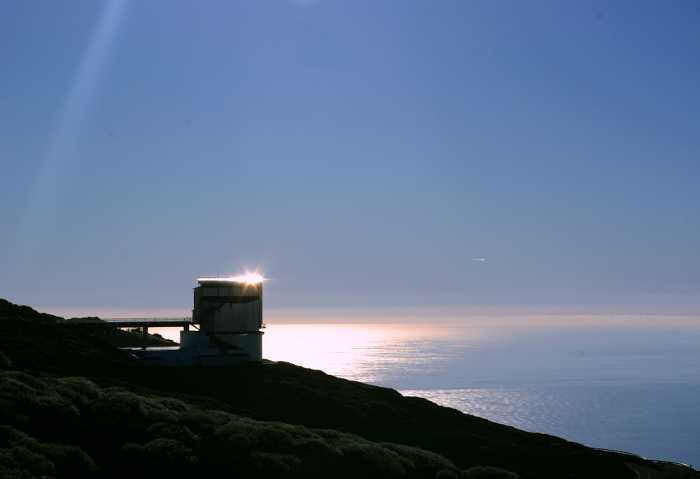
The Italian National Telescope (the Galileo) is getting a new scientific instrument to look for planets outside our solar system.
I remember a childhood astronomy book which said that we would never know whether there are planets outside our own solar system, because they are much, much too small and much much much too far away.
That’s all changed in the last few years.
There’s a class of instruments called spectrographs which put the light through a prism or grating to separate the starlight into a rainbow. Here’s the clever part: rather than a continuous smear of colours, starlight has thin black lines missing. It looks like a fine barcode printed on top of the spectrum. These dark lines are called absorption lines, and each chemical element produces it’s own, distinctive barcode. They’re a result of quantum physics in the structure of the atom. (Please don’t ask me to explain the maths, or I’ll start to whimper.) So by studying the spectrum of a star, an astronomer can tell which chemical elements make up the star. By looking at the relative intensity of different lines on the same barcode, they can also tell how hot it is. And there’s more.
If you listen to an approaching police car or ambulance, you’ll hear the pitch of the siren change as it passes you. As the car comes towards you, the sound waves get squished together, making the pitch higher. Then as the car passes the pitch drops, because now the sound waves are being stretched out, creating a deeper note. This is called the Doppler effect. The faster the car’s moving, the bigger the effect.
The same thing happens with light. If a star is moving towards us, the light waves get compressed, and so the star looks bluer. If it’s moving away, the light waves get stretched, so the star looks redder. The amount its light gets shifted depends on its speed.
How do we know what colour the star was before the light got shifted?
You need a barcode that you know hasn’t been shifted to compare with the same barcode from the star. That makes the amount of shift very obvious. So practically all spectrographs have special lamps, called calibration lamps, to provide this.
So that’s the chemical composition of the star, the temperature, and its movement, all from a boring-looking barcode.
When you were a kid, did you ever fill bucket with water, and then whirl around with the bucket at arm’s length, so that the centrifugal force kept the water in place? If you watch somebody doing that (borrow a seven-year-old) you’ll see the person moves from side to side as they spin, pulled off-centre by the bucket. The bigger the bucket, the more the wobble. In a similar way, an orbiting planet makes its parent star wobble. The catch is that the bucket weighs perhaps 5% as much as the kid, whereas planets are usually tiny compared to the star, so it’s a very tiny wobble. The biggest known planet is 1/7 the mass of the smallest known star, but that’s highly unusual. Our sun weighs over a thousand times as much as the biggest planet in our solar system, which is Jupiter.
So at first the wobble technique only worked for unusual planets, the so-called “hot Jupiters”: hot because they’re unusually close to the star, and “Jupiters” because they’re enormous (Jupiter weighs as much as 317 Earths).
The Galileo Telescope’s new spectrograph (HARPS-N – High Accuracy Radial velocity Planet Searcher – North) works using the same technique, but since they’re hoping to find earth-like planets, they’ll need to spot the star moving at about 1 m/s, which is a slow walking speed.
That’s impressive accuracy, and it doesn’t come easy. For a start, the instrument itself is housed in a clean room inside a triple enclosure. Each enclosure is temperature controlled, and the innermost one is a vacuum, with the temperature kept stable to within 0.01 ºC.
It’s a near-copy (slightly improved) of an instrument that’s been working in Chile (HARPS-S, but with improved optical fibres.
The first fibre collects light from the star. The second fibre can be used to collect either the sky background, or a reference lamp (with the absorption lines in a known place) to compare with the starlight.
The plan is to look at promising stars discovered by a NASA satellite called Kepler which looks for stars whose light periodically dims just a little, as though a planet is passing between the star and the satellite.
Spectrographs are common enough, but HARPS-N might just find another planet we can live on.

This article has 1 Comment